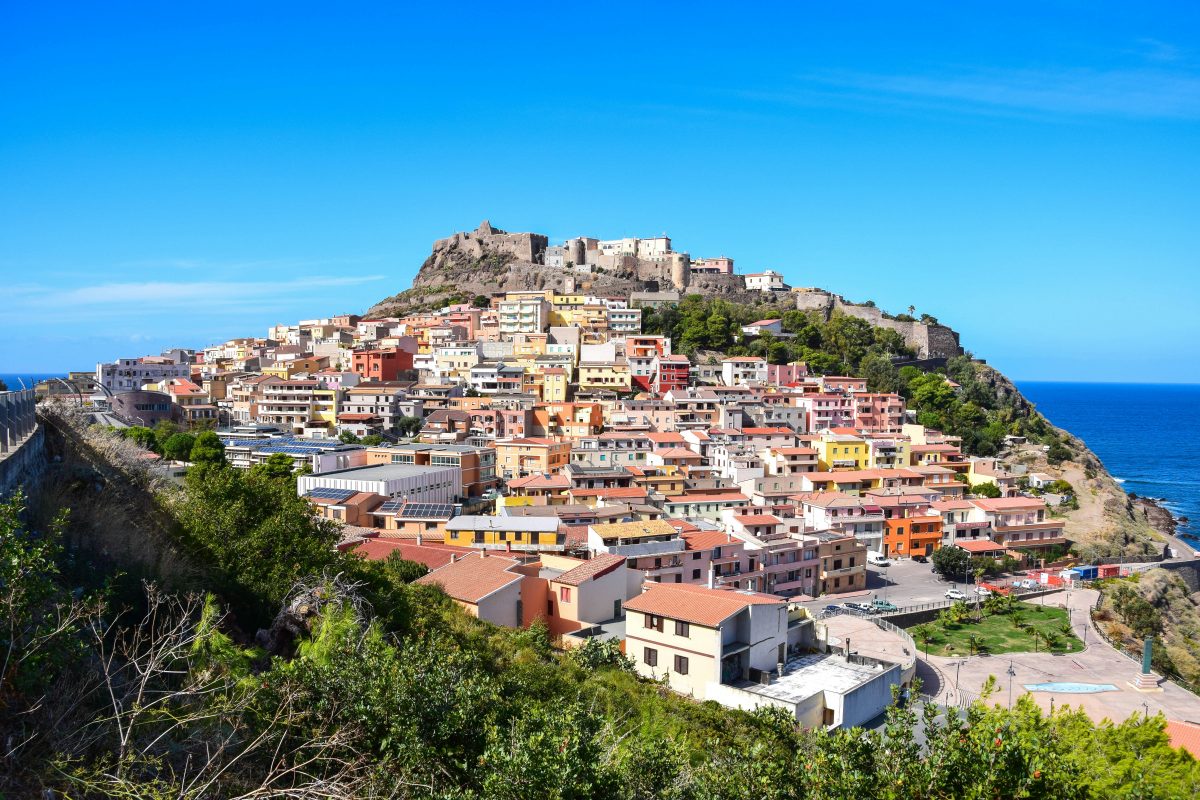The north of Sardinia is known for its exclusive seaside resorts such as Porto Cervo and Porto Rotondo as well as the paradisiacal beaches of the La Maddalena archipelago. However, this region is less well known for its authentic villages and small towns, often located away from the tourist hustle and bustle, which are known as borghi and have preserved their centuries-old traditions and original charm. These borghi are often hidden between the sea and the mountains, and the hospitable inhabitants are happy to share local stories and legends about their place.
The best way to discover these picturesque places is on a deliberately slow and careful journey in your own car or hire car. Below we suggest a round trip with 8 stages, starting in the north-east near Olbia and ending in the north-west in Bosa.
San Pantaleo
San Pantaleo is a charming village in the hills of the Emerald Coast and close to Olbia airport. Known for its stone houses and narrow cobbled streets, the village has been chosen over the years by many artists who have settled here for short periods because of its relaxing and authentic atmosphere. The famous artisan market takes place every week, where you can buy beautiful local artefacts. There are several restaurants in the village where you can enjoy traditional dishes, and in the surrounding area there are wineries and agritourisms where you can taste the refreshing white wine Vermentino di Gallura, one of the tastiest wines in Sardinia.
Poltu Qualtu
Poltu Quatu, which means ‘hidden harbour’, is a small seaside resort on the Emerald Coast. Situated by the sea, it offers a mixture of elegance and tranquillity, with a marina with luxury yachts and exclusive restaurants. The crystal-clear waters are ideal for snorkelling and diving, and boat trips are available to explore the beautiful beaches and bays of the surrounding area. For lovers of outdoor activities, the lush nature and surrounding rock formations are ideal for hiking.
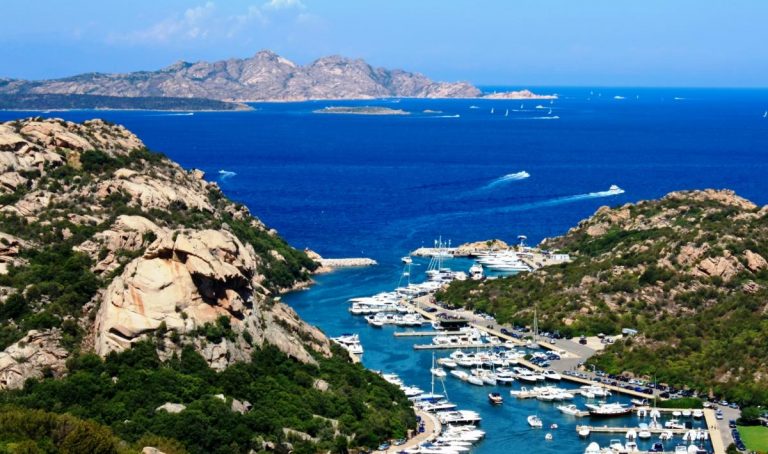
Santa Teresa di Gallura
Santa Teresa di Gallura is a small town on the northern tip of Sardinia, opposite the Bocche di Bonifacio strait that separates Sardinia from Corsica. Famous for its enchanting beaches, such as Rena Bianca, the town also has a charming centre. Characterised by cobbled streets, small squares and colourful buildings, Piazza Vittorio Emanuele I is the beating heart of the town. Don’t miss the view from the Torre Longonsardo, an old watchtower that offers a spectacular view of the coast.
Tempio Pausania
Tempio Pausania is a small town of around 14,000 inhabitants in the hinterland of Gallura, about 45 kilometres from Olbia. Tempio Pausania, surrounded by lush cork oak forests, is known for its open-air thermal springs, the Piscinas di Tempio, and for its characteristic historic centre with houses made of unplastered granite stone, reflecting the architectural tradition of Gallura. The Cathedral of San Pietro and numerous medieval churches bear witness to the rich religious history of the area. We also recommend a visit to the spa park with its mineral water springs, the ‘Fonti di Rinaggiu’. Tempio Pausania is also considered the centre of the Sardinian cork industry, and there are several shops in the village selling a wide variety of objects made from this fascinating natural material. The area is dominated by Monte Limbara, which is ideal for mountain biking and trekking in spring and autumn, while in winter it is a popular destination for skiers.
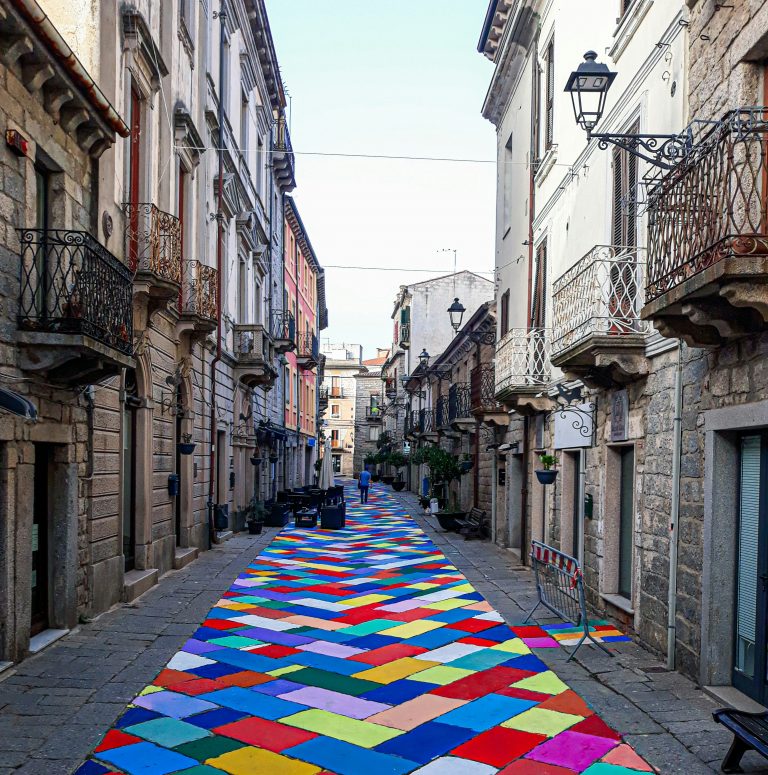
Aggius
Aggius, near Tempio Pausania, is a village rich in tradition and culture and is considered by many to be one of the most romantic villages in northern Sardinia. The narrow stone streets, where some buildings are decorated with beautiful murals, lead to charming squares where time almost seems to stand still. The two museums, the Museo Etnografico and the unique Museo del Banditismo, offer a fascinating insight into local history. Nearby is the famous Valle della Luna, an ideal place for nature excursions and unique landscape panoramas.
Castelsardo
Castelsardo, considered by many to be one of the most beautiful borghi in Italy, is located directly by the sea on a rocky headland with a breathtaking view of the Gulf of Asinara.The Doria Castle in the high and winding old town dominates the panorama and is home to the Museo dell’Intreccio Mediterraneo (Basketry Art Museum), which is dedicated to the art and development of plant fibre processing in the Mediterranean region.
The winding streets of the old town centre are a labyrinth of alleyways, arches and stairways leading to small squares and picturesque viewpoints. The cathedral of Sant’Antonio Abate, with its bell tower and dome covered in stone tiles, rises steeply above the sea.
There is a small marina in Castelsardo, from which boat trips along the coast are also offered.
Stintino
Stintino, high up in the north-west of Sardinia, is known for its beautiful beaches, especially La Pelosa with its turquoise-coloured water and fine sand. The original fishing village has managed to retain its authentic charm. To learn about its history, a visit to the Tonnara Museum is recommended.
Excursions are also organised from Stintino to the island of Asinara, a nature and marine reserve known for its wildlife and crystal-clear water. The calm, clear waters are ideal for water sports such as windsurfing, kayaking and sailing, and several schools offer courses and equipment hire.
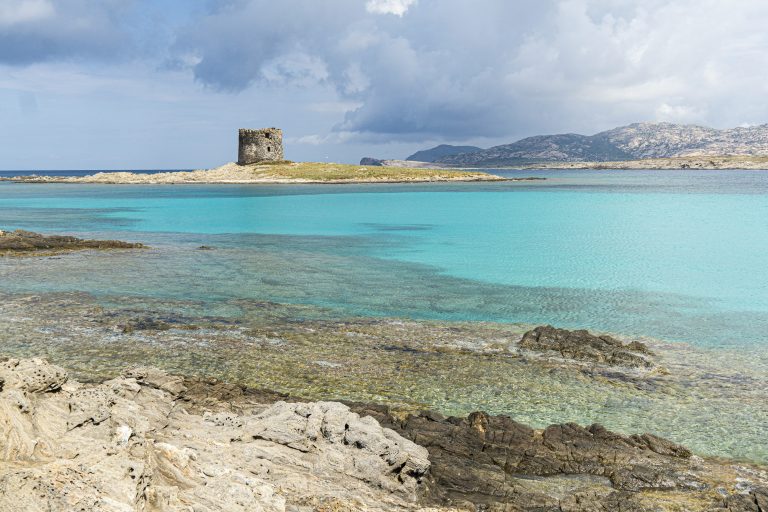
Alghero
Alghero, the picturesque coral town with its Catalan influence still present today, is the next destination. Stroll through the cobbled streets, explore the old town surrounded by ancient walls and immerse yourself in history by visiting the Cathedral of Santa Maria and the Church of San Francesco with its impressive cloister. Alghero is also famous for its sea caves, and a visit to the Grotte di Nettuno (Neptune’s Cave) is an experience not to be missed. The cave can be reached either by sea or via the Escala del Cabirol (deer ladder), a spectacular staircase built into the steep cliffs at the foot of Capo Caccia, offering a fascinating insight into Sardinia’s underground limestone formations.
Stroll along the city walls, where you can enjoy a breathtaking view of the sea at sunset, and visit the fish market to sample local specialities. The town is known for its restaurants serving fresh fish dishes and the precious red coral, which is crafted into fascinating pieces of jewellery by skilled local artisans and also makes an excellent souvenir.
Bosa
Our trip ends in Bosa, a pretty little town with colourful houses and lots of flair, picturesquely situated on the banks of the Temo, the only partially navigable river in Sardinia. The ruins of the 12th century Malaspina Castle tower over the town. The narrow alleyways and squares of the old town and the palm-lined river promenade with the characteristic Ponte Vecchio bridge invite you to take an entertaining stroll. The Cattedrale dell’Immacolata church, one of the city’s other sights, is located in the old town centre.
Opposite the old town, on the right-hand side of the Temo, are the buildings of the former tannery: here you can visit the beautiful Museo delle Conce, the tannery museum, where machines, tools and products are exhibited and lots of information about leather processing is provided.
Around Bosa, the slightly sweet Malvasia wine is grown, which has been awarded a seal of quality.In Bosa, you can visit the wine cellar Cantina Columbu, which produces a delicious Malvasia.
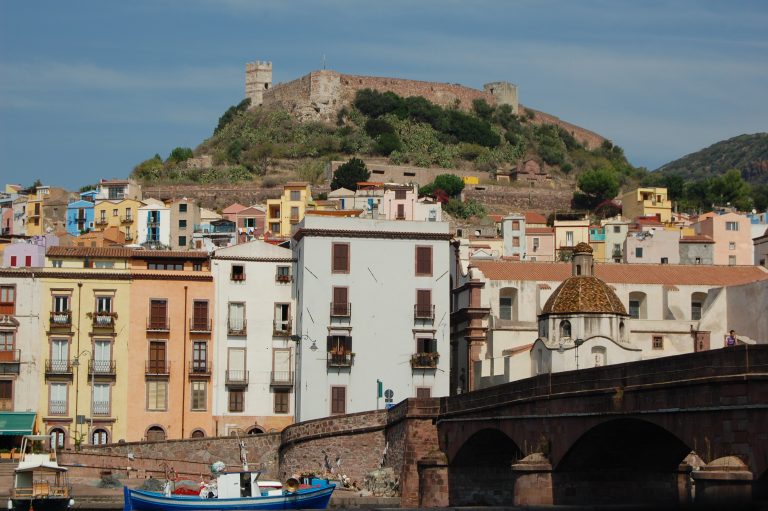
If you have to return to Olbia after this last stage, you can travel back via Orosei and San Teodoro and round off your holiday in these popular seaside resorts.

Where to stay overnight
Accommodation options for this trip include B&Bs, small hotels and farms. We recommend 5 stages:
- Olbia or San Pantaleo
- Tempio Pausannia
- Castelsardo
- Alghero or Stintino
- Bosa
 it
it de
de nl
nl en
en fr
fr
